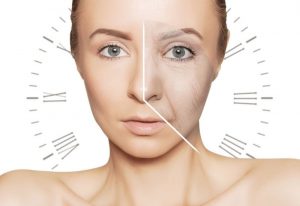Scientists have recently discovered that skin keeps time, independent of the brain. This remarkable finding underscores the impact of circadian rhythms on the various systems of the body and may also have important implications for the prevention and treatment of skin conditions and diseases in the future.
Understanding the Body’s Circadian Rhythms
 Circadian rhythms are the inherent 24-hour cycles that the human body experiences in conjunction with the rising and setting of the sun each day. A number of the body’s natural processes are dictated by this cycle. While most research relating to circadian rhythms focus on the body’s sleep and awake cycles, these cycles also impact body temperatures, eating habits, digestive processes, energy levels, the release of hormones and much more.
Circadian rhythms are the inherent 24-hour cycles that the human body experiences in conjunction with the rising and setting of the sun each day. A number of the body’s natural processes are dictated by this cycle. While most research relating to circadian rhythms focus on the body’s sleep and awake cycles, these cycles also impact body temperatures, eating habits, digestive processes, energy levels, the release of hormones and much more.
Understanding more about circadian rhythms and the body’s master clock has helped scientists to better treat medical conditions and to offer recommendations for improving a number of facets of everyday life.
The Circadian Rhythm of the Skin
Just like many other organs in the body, your skin has its own master clock, which impacts health and appearance of the skin. It has long been known that skin cells perform different actions at distinct times of the day. For example, stem cells located in the outer layers of the skin typically reproduce in the overnight hours when the body is at rest. This is why not getting enough sleep can negatively impact the appearance of your skin.
Scientists can lean on past findings to determine when you should apply skincare products for maximum benefit or what time of day the complexion looks its best. For instance, during the daytime hours the skin is at its thickest as it produces sebum to guard against the harmful effects of the sun and other environmental factors. The skin knows to produce this additional sebum between the middle of the day and 3 p.m., coincidentally the same time of the day when the sun’s harmful UV rays are the strongest.
The presence of extra sebum is also why your skin appears oilier in the afternoon hours. While the sebum provides that natural layer of protection against the sun, your complexion is also less likely to look its best as a result. Note that this does not mean that you can skip out on sunscreen application.
Conversely, the surface of the skin becomes more permeable during the evening hours as the sun begins to set. This means that this is naturally the best time of the day to apply your favorite skincare products. Skin that is more permeable is going to be more receptive to absorbing the active ingredients in these products, helping you to harness the power of the applied products.
During the overnight and early morning hours, the skin is busy replacing old cells. This work translates to oil production being at its lowest during this portion of the natural rhythm of the skin. In addition, as blood flow also increases after the sun sets, hydration to the skin is accelerated. This is why many people notice that their skin looks the best in the morning hours.
How the Skin Keeps Time
A study published in the journal Current Biology details how the skin of mice exhibits its own circadian rhythms that are in alignment with the earth’s light-dark cycle, a process that is independent of the eyes and the brain. As a result, scientists can deduce that the skin has receptors that work independently of other processes.
The discovery of the skin’s internal clock has implications that stretch far beyond the appearance of your complexion. Unlocking more information about the internal clocks of skin cells has shown researchers how to mitigate premature aging and skin cancer. For example, a study out of the University of North Carolina demonstrated that ultraviolet light absorbed in the early morning hours increased the development of skin cancer when compared to the same amount of light in the late afternoon. This difference is due to the way in which the skin is better able to protect against these harmful rays in the afternoon hours.

There is still much to learn about the body’s master clock and how internal rhythms influence a variety of biological processes. How the skin keeps time and what this means for the appearance of your complexion and your overall health is just the tip of the iceberg when it comes to harnessing the body’s natural circadian rhythms to work to your advantage.







